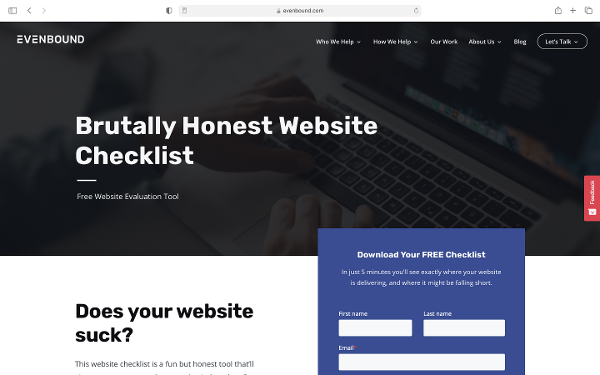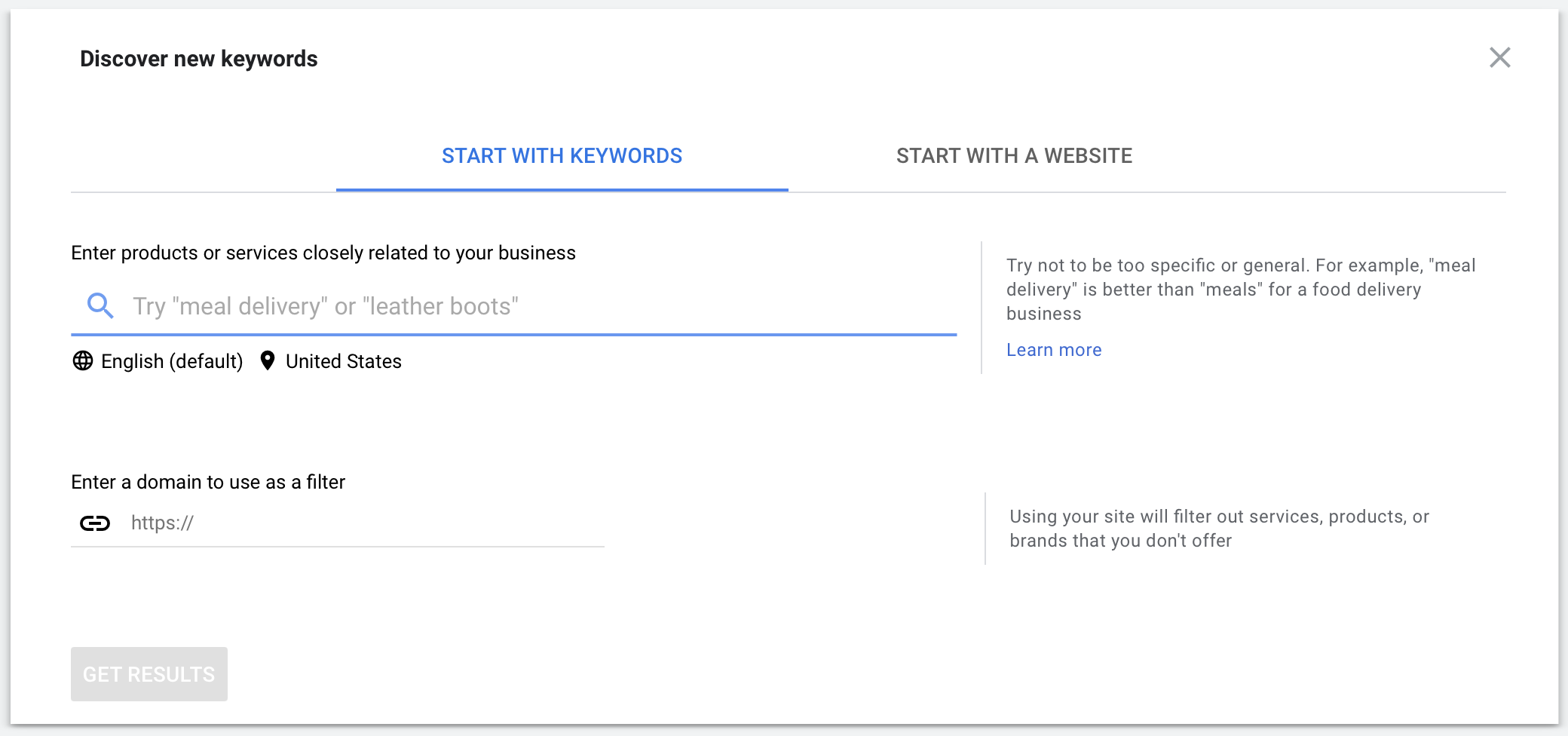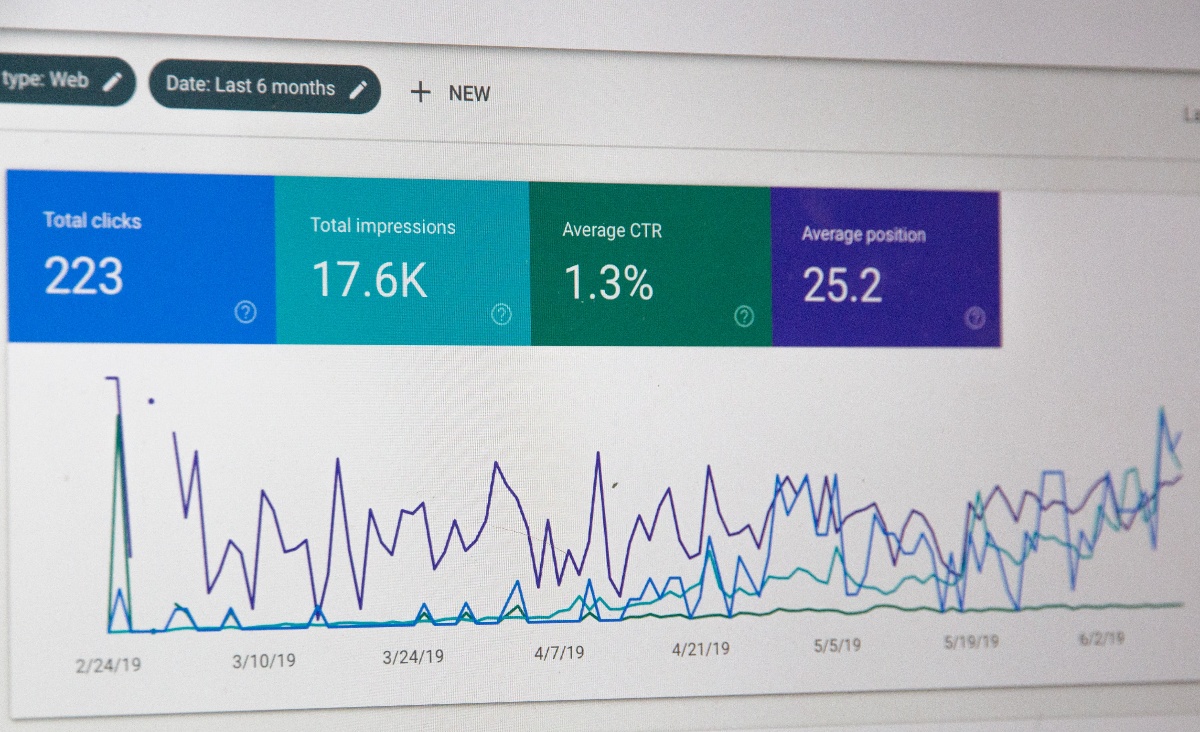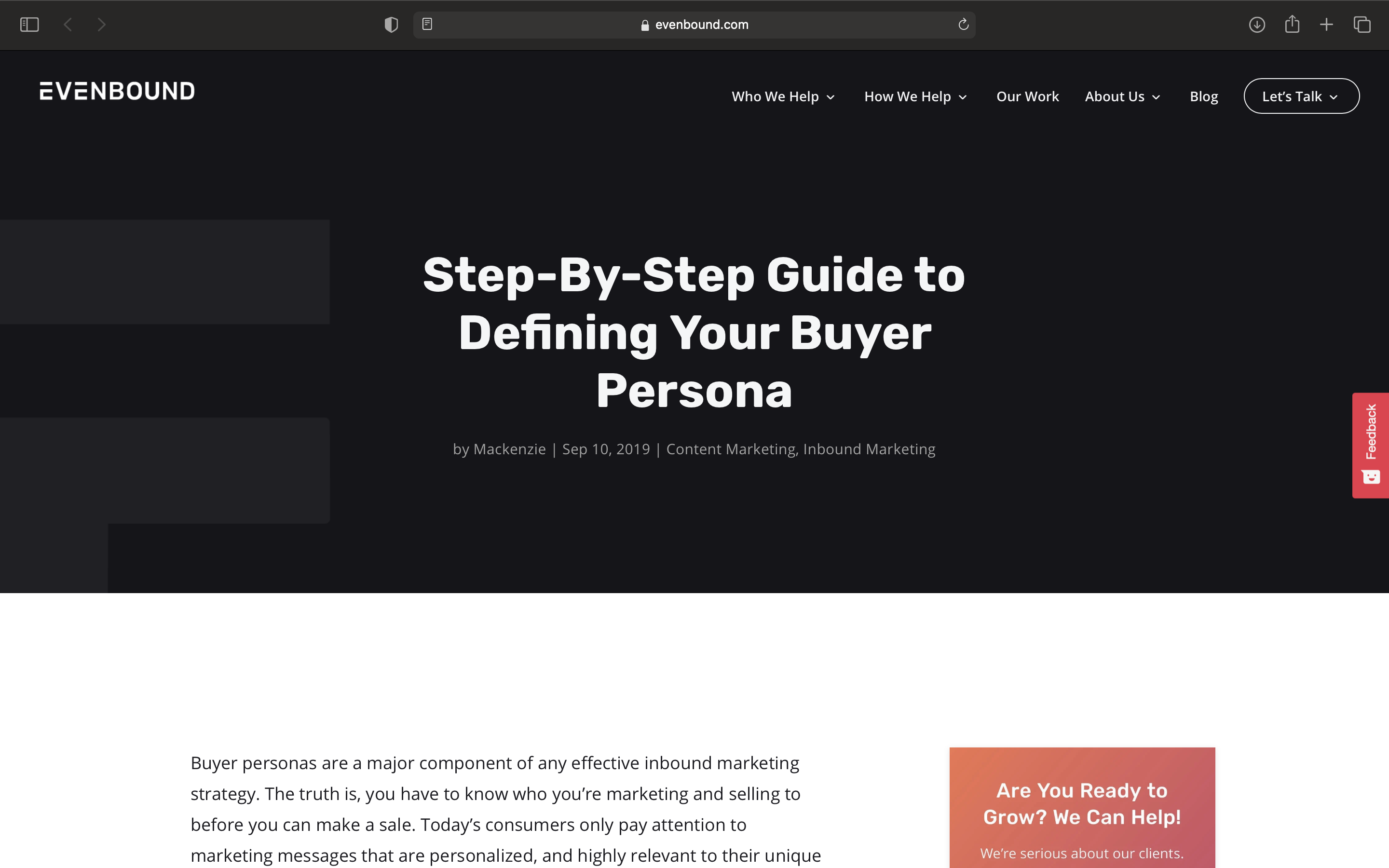Complete Guide to Digital Marketing for SMBs

In 2021, SMBs without a digital presence will be left behind.
If you’re ready to change with the times and grow your small business, you’re in the right place. This guide will lay out everything you need to know about digital marketing for SMBs along with some strategies you can use right now to bring your business into the digital age.
The Menu:
Digital Marketing for SMBs: The Complete Guide
Not here to read the whole thing? Totally cool. Jump to the section you care about most with the menu below. No hard feelings.
Digital Marketing for SMBs Starts With Your Website
Digital Marketing for SMBs: Traffic to Leads to Sales to Profits
Outbound Digital Marketing for SMBs
Inbound Digital Marketing for SMBs
Grow Your Business in 5 Steps with Digital Marketing for SMBs
Step 2: Develop Your Content Strategy
Step 3: Create Engaging and Helpful Content
Step 4: Optimize Your Website and Content
Step 5: Track, Report, and Repeat
Digital Marketing for SMBs: The Complete Guide
If you have a small business, you know how important customer satisfaction is to your success. As your customer needs change, you must be ready to adapt to meet them. Digital marketing for SMBs is about connecting with your customers where they are — which, increasingly, is online.
Digital Marketing for SMBs Starts With Your Website
Digital marketing for SMBs starts with your digital presence: your website. Your customers place more trust in companies that have established authority on the web, and if you don’t have a well-functioning website (or a website at all), it’s up to you to provide your customers with the information they need to build trust and grow your small business.
To build a great website and increase your digital marketing for SMBs, you’ll need to ask yourself three questions:
Is your website effective? Is it useful? Is it engaging with your customers?
How Effective is Your Website?
An effective website in the modern age must be a jack of all trades: aesthetic, user-friendly, informative and helpful without being overwhelming, or confusing. It needs to be laser-focused on your goals and streamlined to deliver the most important information to visitors when they need it.
How is Your Website Used?
It’s more than a place to put your phone number and brick-and-mortar address: your website is where you share your story, delight your customers, solve their problems, and ultimately grow your business.

Your website is used across all the teams of your business. A well-functioning website should:
- Be used by customers to learn about your brand, goods, and services
- Be used by marketers to draw in traffic and qualified leads, and convert them to sales for your business
- Be used by your sales team to direct questions, nurture leads and convert them to sales for your business.
Advanced features can allow your website to:
- Be a point of sale for goods and services
- Present opportunities to solve customer problems
- Collect reviews and testimonials
- Give customers a platform to connect with you and each other
- And much more!
Is Your Website Engaging with Your Customers?
Your website also needs to engage with your customers in order to draw in traffic, capture leads, and close on sales — which means more profits for your SMB. An optimized website and content strategy can help you improve your website’s performance organically and grow your small business.
You don’t have to reinvent the wheel when it comes to creating a functional and informative website, but it should also be working for you to help accomplish your goals.
An effective website is a critical tool in digital marketing for SMBs. Is your website performing the way it should?
Digital Marketing for SMBs: Traffic to Leads to Sales to Profits
When you’ve established your digital presence with a stunning and stunningly efficient website, you want people to see it, learn about what you do, and buy your products or services, right?
More traffic to your website equals more leads your sales team can use to generate more profits for your business.
Think of it this way: You wouldn’t build a city with shopping malls, movie theaters, tree-lined streets, and manicured parks — and then forget to include a road to it!
Your goal is likely to bring in visitors to contribute to local tourism, buy your goods and services, and, most importantly, tell their friends about their experience.
Increasing traffic and leads with your website uses the same strategy. Your website should draw visitors in, engage with them, nurture them into leads, and then convert them into customers. You want to provide them with the best experience possible — one they’ll want to share with others, your future customers.
When we talk about increasing traffic and turning it into sales using digital marketing for SMBs, there are two main marketing strategies to consider: inbound vs. outbound.
Inbound vs. Outbound Digital Marketing for SMBs
Driving traffic to your hypothetical city or your very real website can happen in two ways: inbound or outbound marketing. For our purposes today, we’ll explain what each is, but mostly focus on the long-game of inbound marketing and how you can craft an inbound marketing strategy to grow your business organically.
Outbound Digital Marketing for SMBs

Outbound marketing is like putting up billboards on the major highways, advertising on television, and telling people your city is here and it has everything they need to enjoy a visit or buy a home and settle down.
With outbound digital marketing, you can run paid search campaigns and advertising to put your goods and services in front of potential customers and direct them to your website for more information.
Examples of Outbound Digital Marketing for SMBs
Outbound digital marketing for SMBs can take many forms, but here are a few of the most common:
- Paid Search Campaigns
- Google Ads
- Facebook and Instagram Advertising
- Linkedin Advertising
- Email Marketing
- And basically any other marketing or advertising effort you pay for
There are a lot of ins and outs to web traffic, but for now, know that outbound marketing is an option that can help you increase traffic, leads, and ultimately sales for your business.
Inbound Digital Marketing for SMBs

The other strategy for digital marketing for SMBs is inbound marketing. Unlike the direct outbound marketing strategy, inbound marketing is like when people hear about how great your city is from friends who have visited or live there, or they hear about a shop or destination in your city and want to check it out for themselves.
When they arrive, they’re delighted by informative signs, easy navigation, and all the information they need to enjoy visiting your city. By the time they leave, they’ve enjoyed their visit so much, they’re ready to tell everyone they know about their experience — which drives more and more people to your city, increasing tourism and profits.
On your website, inbound marketing pulls in traffic from people searching for answers to a question — answers that the content on your website provides. Answer your customers’ questions by writing content that is optimized for common search queries that your ideal customers use, and by creating a strategy with the goal of having your website rank highly for low competition keywords.
Attract, Engage, and Delight
Once they’re at your website, you can provide your potential customers with engaging, educational content and resources that not only help them solve their problems, but also make the experience enjoyable. Your customers will be delighted to purchase your goods and services now that you’ve gained their trust. They’ll also be more likely to tell their friends about you — which is the best marketing gift an SMB could ask for.
After all, if you’d heard about a new city from a friend, versus a billboard you saw on the highway, your friend’s opinion will likely be of greater value to you. In a similar way, your customers likely value the inbound, organic ways you reach out and engage with them more than the outbound ways, although both are effective ways to increase traffic and leads with your website.
Examples of Inbound Digital Marketing for SMBs
A few great ways to attract, engage, and delight your customers using inbound marketing are:
- Blogging
- Email Marketing
- Social Media
- Videos
- Content Offers
- Guides
- Ebooks
- Checklists

Inbound and Outbound: A Happy Marketing Marriage
Ideally, whether you’re building a new city or a website for your company, you’ll need both inbound and outbound marketing to generate more leads and sales for your business. Both inbound and outbound strategies complement each other and work together to drive growth.
One great example of this happy marketing marriage is the use of both paid and organic keywords when writing and optimizing content.
 Google Keyword Planner is a great resource to find organic and paid keyword opportunities for your website.
Google Keyword Planner is a great resource to find organic and paid keyword opportunities for your website.
Paid vs. Organic Keywords
Paid keywords are keywords that are very relevant to your business, but that have high competition. Since it is difficult to rank for these competitive keywords organically, bidding on them with paid search ads provides a different avenue for your company to show up for those relevant terms.
Organic keywords are search terms with high search volume and low competition that you work to rank for by developing content on your website and blog. If your content fits the searcher’s query best, you may rank well in the search results for those terms. If you really work at building your organic keyword ranking, you may even rank on the first page of search results.
Organic keywords take more time to get going before you start to see significant results, as you have to build authority with your website and content over time.
The commitment to organic keywords is worth it because the leads you receive are likely better qualified and more interested in buying from you. And, organic keyword ranking increases your website’s domain authority, which means you’ll be likely to rank higher for both organic and paid keywords in the future.

Both paid and organic, and inbound and outbound, are important for effective digital marketing for SMBs. They help you actualize both short and long-term results for your SMB and grow your business — both digitally and in the real world.
If you’re ready to bring your SMB into the digital age — get in touch with the website experts at Evenbound. We know SMBs and combine the methodologies of Inbound and Outbound Marketing to successfully market — and grow — your SMB.
Putting it All Together: 5 Steps to Use Inbound & Outbound Marketing to Grow Your Small Business
How do you increase traffic to your site, draw in more qualified leads and increase sales with digital marketing for SMBs? We’ll break it down into 5 steps:
- Target your website and content towards a group of ideal customers, which you will define through buyer personas (semi-fictional representations of your perfect customers).
- Implement a content strategy to help you produce, manage, and optimize your organic content to increase your brand’s digital presence, draw in new leads for your sales team, and close on more sales.
- Create helpful, engaging content that solves for your customers. The more value you provide, the more trust you’ll build, for more, better quality leads.
- Optimize the content for search so your ideal audience can find you and interact with your website and content — and hopefully your sales team.
- Track the results of your hard work, making adjustments to your digital marketing content strategy as needed.
Let’s take a closer look at each of these steps, so you can start growing your business with digital marketing for SMBs.
Step 1: Define Your Audience
Realistically, you can’t market towards everybody, and you don’t want to! The people you want viewing your website and content are those who are most likely to purchase from you. They may need some help to get to the sale, but ultimately, they are qualified leads for your marketing and sales teams to interact with.
To help you identify your ideal buyers, create buyer personas to explain who they are and what they need from you. Buyer personas are semi-fictional representations of your ideal customers. They can be constructed using real data and feedback from your existing customers with some insight about what you do and who you do it for.
Most SMBs have two or three personas that describe their target audience. A buyer persona will include information about:
- The persona’s age, occupation, location
- Income, marital/family status, education
- Pain points: problems they face which your product or service can solve
- Preferred method of communication: phone call, email, text, etc.
Your buyer personas will each have a backstory about what they’re looking for out of a relationship with a business. They help you relate with your customers and target your digital marketing to provide them with content and offers uniquely suited to their needs.
Write Broadly and Specifically
Not everyone is ready to buy what you’re selling, but they may be at some point, so don’t rule out an audience just because they’re not purchasing at this moment. When developing your website and creating content, remember to direct your efforts towards buyer personas in all three stages of the typical buyer’s journey: awareness, consideration, and decision.
The Buyer’s Journey
- In the awareness stage, your customers might realize they have a problem, but they aren’t sure how to fix it. They’ll be looking for general information about your industry, or researching their problem to understand it better.
- Buyers in the consideration stage may know they need a solution, but haven’t settled on a specific product or service to solve their problem. They may be comparing different options to discover which solution will be right for them.
- When your personas are almost ready to buy, they’re in the decision stage. Buyers in this stage may know exactly what they need, but are considering different companies like yours. It’s up to you to show them why a product or service like yours is their best bet and why your brand is the ideal fit for them.
It might take a bit of time to organize your thoughts, but you’ll be so glad you did. Buyer personas inform so many of your marketing choices, from outbound advertising to inbound content creation and strategy.
Step 2: Develop Your Content Strategy
A content strategy is a way to manage, optimize and grow digital marketing for SMBs organically and productively. When considering all the content you need to write to engage with your customers and build a website that has authority against competitors, it can be overwhelming.
A content strategy can help you break down the work to be done in smaller increments, so you can grow your digital marketing efforts over time. Implementing a strategy also means you can make adjustments along the way as you discover what works, and what doesn’t for your SMB.
Step 3: Create Engaging and Helpful Content
The best way to make sure your site gets great traffic and appears in search results is to create original, inspiring, and helpful content that engages with your ideal customers.
Having informative content on your webpage and establishing and committing to a blog covering topics that interest your audience and support your brand will not only bring people to your site to learn what you do — but also establish your company as an authority on the subject.
If people read your posts and consider your company to be an expert, you’re likely to be the first call they make when they need advice or have questions about your product — and that means sales delivered to your doorstep.
Step 4: Optimize Your Website and Content
Building a spectacular website and writing great content are great ways to spend your digital marketing dollars, but you need people to see them in order for your efforts to be effective. How do you create content that gets noticed by search engines, and therefore your ideal readers? By optimizing it!
What is Search Engine Optimization?
Search engine optimization (SEO) is the magic way of getting your content to speak to engines like Google, Bing, and more, telling them that your content is the best answer to searchers’ queries. The thing is, it’s not magic at all, it’s a real practice you can use on all of your website’s content that search engines can access.
Basically, the better your content is, according to search engines, the higher it shows up in search results. Although it’s difficult to get all your posts to rank #1, especially if there’s high competition in your industry, there are three main ways to increase traffic to your website organically:
- Create original, helpful content
- Have an informative, updated website
- Optimize for low-competition, high search volume keywords
Having content that your customers care about is the most important, but using search terms that other competitors aren't ranking for will help you appear higher in search results as you build your authority on the web. Keeping your content up to date will help you maintain your rankings and tell search engines that the website is consistently improving its content — and therefore its value to searchers.
Step 5: Track, Report, and Repeat
You’ve come up with buyer personas, written amazing content, and optimized your content for search engines and your ideal buyers — you’re done right?
Not quite.
Even with an established website and content strategy, continuous improvement is needed to refresh and update your existing content, identify problems, and find new opportunities to grow.
- Track: Collect data to track the progress of your content strategy. This could be website analytics or heat maps and metrics including views, bounce rate, and conversions.
- Report: Analyze the data you collect regularly to make sure you are continuing towards your digital marketing goals. The more data you collect, the stronger your analysis will be, and you can fine tune your content strategy to improve your web performance. Effective tracking and reporting can also help you identify keyword opportunities and expand your reach to more viewers (and therefore more leads, too).
- Repeat: As you create new additions to your website content including monthly blogs, email campaigns, content offers, ebooks, and more, you can track and compile data to measure the effectiveness of your content strategy. You’ll know which resources are generating the most qualified leads for your sales team and which need more attention before they can effectively grow your business.

Get Some Help With Digital Marketing For Your SMB
If you don’t have the time to commit to consistent content creation or optimization — or your business is growing from your efforts — you’ll need some professional help to maintain your business growth and meet even larger goals.
The digital marketing experts at Evenbound understand the needs of SMBs. We can help you capture more leads and generate more revenue by managing your website project and content strategy. Think your SMB could benefit from digital marketing? We do too! If you have any questions, we'd be happy to offer some answers.



![What Is Growth Marketing? [And How It Compares to Digital Marketing + Demand Gen]](https://evenbound.com/hs-fs/hubfs/shutterstock_2142028755.jpg?width=352&name=shutterstock_2142028755.jpg)
